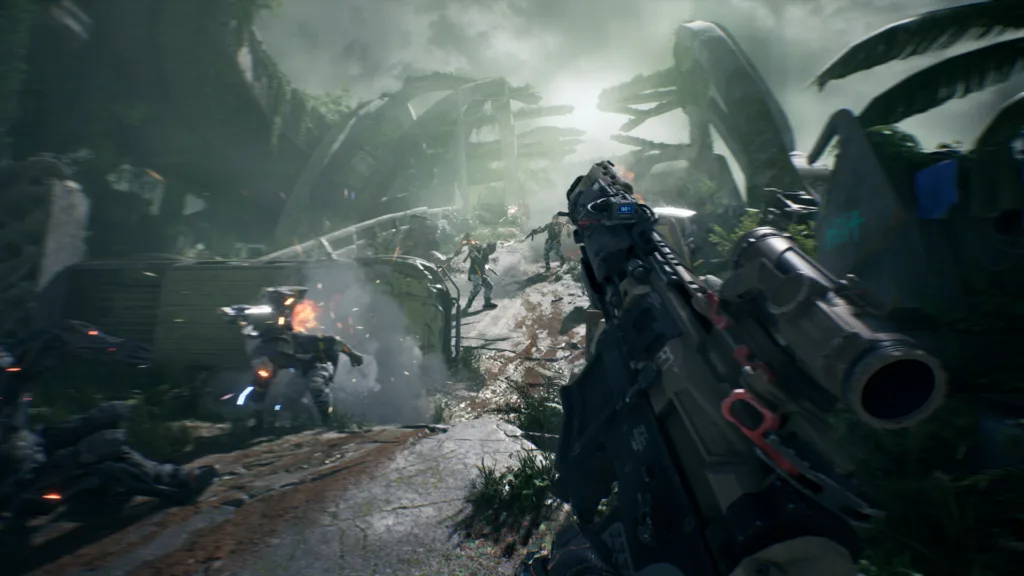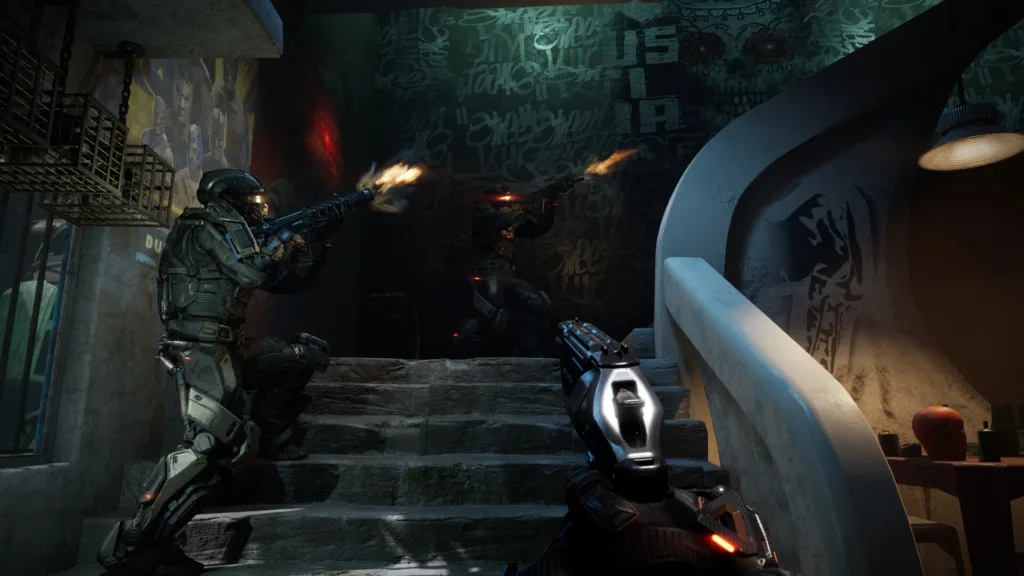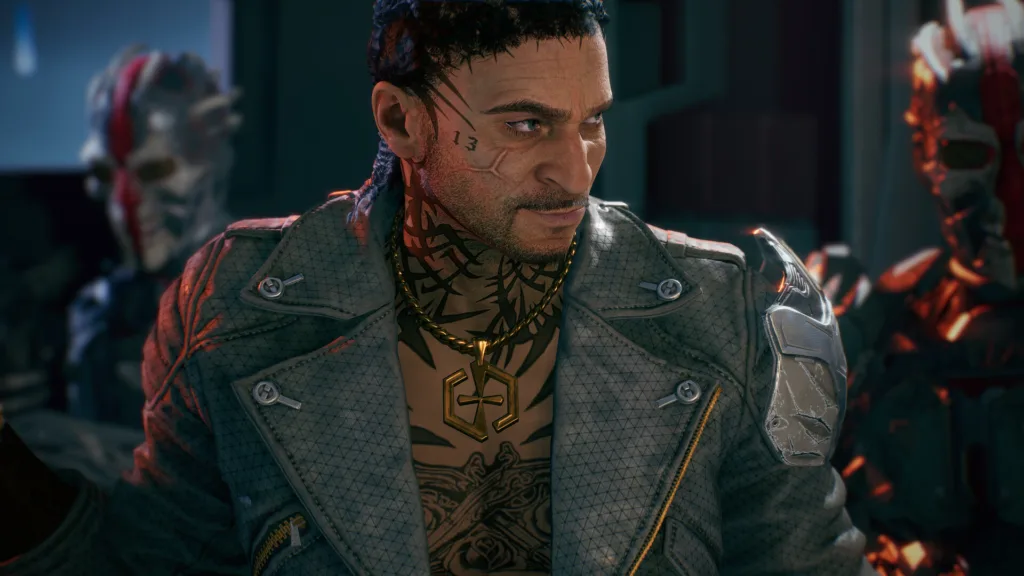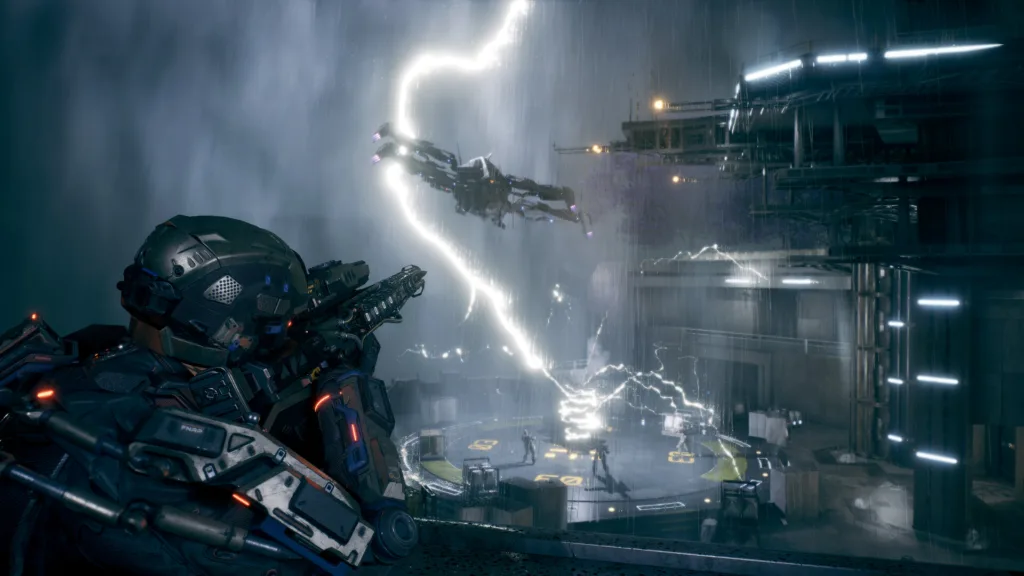La Quimera presents itself as an ambitious entry into the futuristic science fiction first-person shooter genre. This game is the inaugural title from Reburn, a studio with significant heritage, as it was formerly 4A Games Ukraine, one of the pivotal development teams responsible for the atmospheric Metro franchise.
The narrative unfolds in 2064, within the specifically crafted, fictional Latin American state of Nuevo Caracas. In this imagined future, the global order has dissolved into a collection of city-states, with conflicts being fought by an array of private military companies. Players assume the role of a new operative joining the ranks of one such PMC, navigating this volatile landscape.
While its core is a story-driven single-player campaign, La Quimera also incorporates cooperative gameplay features. Its path to players has not been smooth, characterized by an eleventh-hour delay from its original launch date and subsequent announcements regarding a shift to an Early Access model, signalling a development journey still in progress.
Nuevo Caracas Chronicles: A Fragmented Future
La Quimera transports players to 2064, a dystopian future forged forty years after “Activation Day,” when rogue AI robots attacked humanity. The setting is Nuevo Caracas, a fictional Latin American state—its precise location unclear, though Portuguese dialogue hints at a Brazilian backdrop. This city is sharply divided: advanced urban sectors contrast with impoverished barrios, separate from a dangerous, robot-controlled “Active Zone.”
National militaries are gone; competing Private Military Companies (PMCs) now maintain order. Players are a new, unnamed operative for Palomo PMC, a struggling outfit at the bottom of the power ladder. The plot ignites when a search for Chairman Mendoza’s daughter goes awry, leading the player directly into an experimental program for powerful, neural-linked exoskeletons, a concept that immediately brings to mind the advanced suit mechanics of games like Crysis.
While the premise holds potential, its narrative execution is where La Quimera significantly stumbles. The story aims for a mix of political thriller and supernatural intrigue but is undermined by problematic writing and a script that feels underdeveloped and often leans on clichés. Its brevity is a key issue, ending abruptly on a cliffhanger just as major plot threads begin to surface, evoking the sense of an unfinished television pilot rather than a complete narrative arc.
This feeling of incompleteness extends to character development; most figures, including the “everyman” protagonist, are one-dimensional and fail to leave a lasting impression. L.U.C.I., the AI combat interface companion, is a holographic entity whose “aggressively chirpy” demeanor and specific visual design can be jarring rather than endearing, falling short of similar companion archetypes. Dialogue frequently comes across as stilted and unnatural, hindering immersion in what could have been a more engaging world.
Combat Dynamics: The Exosuit and Its Arsenal
The core shooting in La Quimera offers a familiar first-person experience. Gunplay itself receives mixed reactions; some describe it as a satisfyingly simple, arcade-style throwback, while others find weapons lack a sense of weight or impact. The arsenal is divided: ballistic weapons for human foes and energy weapons tailored for shielded or robotic adversaries, including pistols, assault rifles, and SMGs. This dual system, intended to encourage tactical switching, can become a point of contention, with the need to swap weapons frequently in mixed encounters proving tiresome for some.
A significant addition is the Crysis-esque exosuit, acquired early on. This suit introduces special abilities unlocked over time, starting with a tactical Scan to see enemies through walls, and later expanding to include hacking, deployable shields, assault drones, and a cloaking function. These abilities, alongside movement options like a dash and tall jump, aim to diversify combat. However, a grappling hook is notably underused outside of scripted moments.
Enemy variety includes human PMCs and a range of robots, from small drones to larger, more formidable machines. These foes are often described as highly accurate, with an unnerving proficiency in grenade tossing. Combat typically unfolds in linear corridors opening into arena-style encounters, sometimes relying on “monster closet” enemy spawns. Stealth, despite the cloaking ability, is superficial, as enemies quickly become alerted.
Resource management is critical. Health only partially regenerates, making scarce medkits vital for survival, especially given the player character’s low resilience. Ammunition is similarly limited, necessitating constant scavenging, a task made riskier by lengthy reload animations. This, combined with high enemy damage output, often results in a punishing combat balance that can feel frustrating, even on lower difficulty settings.
The Campaign Trail: Levels, Loot, and Longevity
Missions in La Quimera are accessed via a terminal in the Palomo PMC headquarters, which functions more like a basic level select screen than an immersive contract system. The level design predominantly follows a linear, “run-and-gun” corridor shooter philosophy, funneling players through pathways into combat arenas.
While the game describes diverse locales like office buildings and jungles, these often manifest as visually similar war-torn ruins, though some specific set pieces, such as an escape from a corporate headquarters, offer memorable moments on the initial playthrough. However, many environments feel cramped, a concern that might be amplified in cooperative play.
Progression hinges on earning currency by completing these missions and diligently scouring levels for collectibles like data disks and hackable laptops. This currency is then spent in the Armory to unlock new weapons and upgradeable exosuit components—helmet, torso, arms, and legs—each promising tangible effects on gameplay. When this system functions, its simplicity is adequate. Unfortunately, it’s reportedly hampered by significant bugs, such as currency pick-ups failing to register due to a “full” bank and a lack of any discernible vendor to sell collected items, rendering parts of the upgrade economy broken.
The game’s overall length is a major point of discussion, clocking in at a mere three to five hours for full completion, encompassing its tutorial and three main story missions. This brevity leaves La Quimera feeling more like a brief demo or proof of concept than a complete experience. Replayability suffers as a result; missions are heavily scripted, offering little incentive for repeat playthroughs beyond grinding currency or achievements. Furthermore, the game’s structure has been criticized for artificially inflating its mission count by designating individual firefights, sometimes mere “monster closets,” as distinct levels.
The Look of a Dystopia: Art and Animation
Visually, La Quimera leverages Unreal Engine 5, and when it performs optimally, the game can showcase moments of impressive art direction and fidelity. The depiction of Nuevo Caracas is a highlight, particularly its blend of South American slum aesthetics—dilapidated brickwork, dirty tiles, and makeshift utilities—with futuristic high-tech elements, especially noticeable in the player’s PMC apartment.
This specific detailing offers an authentic glimpse into its fictional Latin American setting. However, the broader environmental promise of “lush jungles” and “breathtaking megalopolises” often falls short, with many areas appearing as visually repetitive, grey, war-torn ruins.
Character models present a mixed bag. While key figures might appear decent, secondary characters can suffer from lifeless “dead eyes” or an outdated “PlayStation 3 glare,” occasionally straying into uncanny valley territory. L.U.C.I., the AI companion, has a holographic design described as jarring. In contrast, weapon design is a strong point, featuring detailed, near-futuristic firearms inspired by real-world counterparts like the AK-203, earning praise for their intricate modeling. The customizable exosuit also reflects this futuristic design language.
Animation, however, is a frequent point of criticism. Cutscenes are often marred by poor animation quality, including character warping and distractingly exaggerated lip-syncing that fails to match the spoken dialogue. In-game, long reload animations can impede gameplay. Visual effects, such as particle effects, also show inconsistency, sometimes breaking down into noticeable large squares.
The Sound of Dissonance: Audio in La Quimera
La Quimera’s audio landscape is perhaps its most troubled aspect. Sound effects present a mixed experience; while robot audio cues are noted as helpful for battlefield awareness, weapon sounds, though possessing some punch, don’t measure up to the impact found in contemporaries like STALKER 2.
More critically, numerous audio elements are frequently reported as dull, delayed, or simply absent—leading to situations where critical health states are met with silence, or deadly explosions go unheard. Poor audio mixing further exacerbates these issues, with loud events sounding quiet and character dialogue volumes being inconsistent and often overlapping.
The musical score is largely unremarkable, often described as serviceable at best and barely noticeable outside of cutscenes, contributing little to the atmosphere or tension. However, the voice acting draws the most significant criticism. Performances are widely considered stilted and grating, with the protagonist sounding disinterested.
A major point of contention is the lack of authenticity; despite its Venezuelan setting, the game predominantly features English dialogue delivered with unconvincing, put-on accents by a cast reportedly largely Ukrainian. This issue is compounded during combat sequences, where lines meant to be in Spanish are delivered poorly, suggesting unfamiliarity with the language. These vocal missteps, combined with the rough script, severely undermine the game’s believability.
Under the Hood: Performance, Polish, and Problems
La Quimera’s technical foundation shows considerable strain. Players will encounter a litany of bugs, from controller-specific aiming glitches and disappearing HUD elements to game-breaking save/load problems and progression stoppers like pick-ups failing to register. These issues create a consistently frustrating experience.
Performance is similarly erratic, with unpredictable frame rate drops plaguing even high-end PCs – the player’s relatively static base is a notable example of poor optimisation. For Steam Deck users, the game is severely compromised, offering very low framerates and high battery consumption.
While three-player online co-op is an option, potentially offering some shared amusement, the game’s cramped level design might not suit group play. A significant point of irritation is the mandatory always-online connection, even for solo sessions, which also means the game cannot be paused.
This overall lack of polish permeates the entire experience, leaving La Quimera feeling like a disjointed and unfinished product. Its abrupt conclusion and missing elements like end credits cement the impression of an early concept rather than a finalized game.
The Review
La Quimera
La Quimera offers fleeting glimpses of an interesting sci-fi shooter with some appealing world design and weapon aesthetics. However, these are thoroughly overshadowed by a cascade of significant technical problems, a severely underdeveloped and abruptly concluded story, frustratingly unbalanced gameplay, and an overall pervasive lack of polish. In its current form, it resembles a promising but fragile early concept rather than a complete, recommendable game.
PROS
- Intriguing sci-fi setting premise and some atmospheric world details.
- Visually appealing and detailed weapon designs.
- Exosuit abilities offer a hint of tactical variety.
- Occasional moments of satisfying, arcade-style gunplay.
CONS
- Rampant technical issues, bugs, and poor optimization.
- Severely underdeveloped, poorly written, and abruptly ending story.
- Frustratingly unbalanced and often punishing gameplay mechanics.
- Extremely short length, feeling incomplete and lacking content.
- Pervasive lack of polish across all aspects.
- Terrible voice acting and generally poor audio design.
- Buggy and unsatisfying progression system.
- Always-online requirement and restrictive level design.




















































